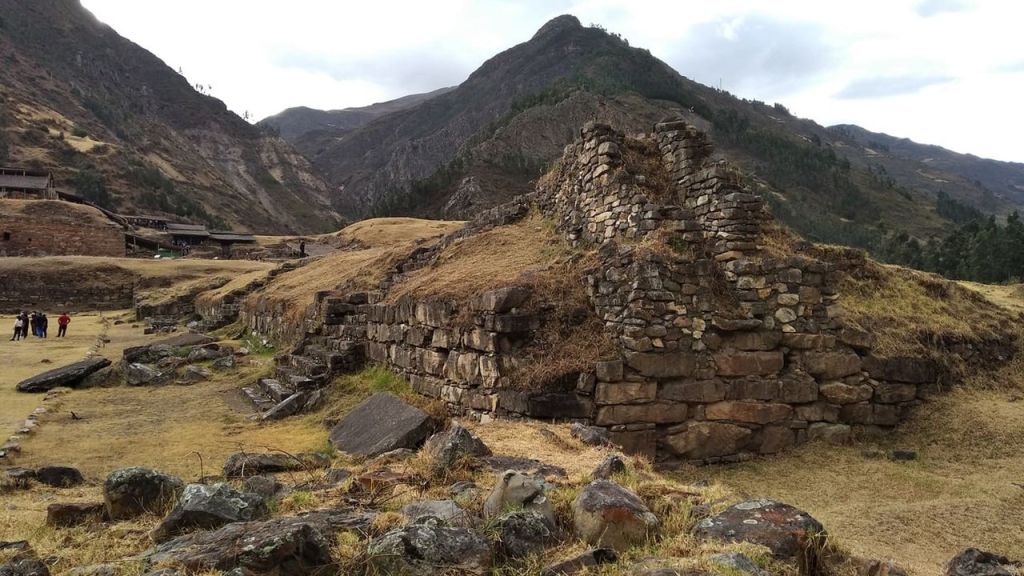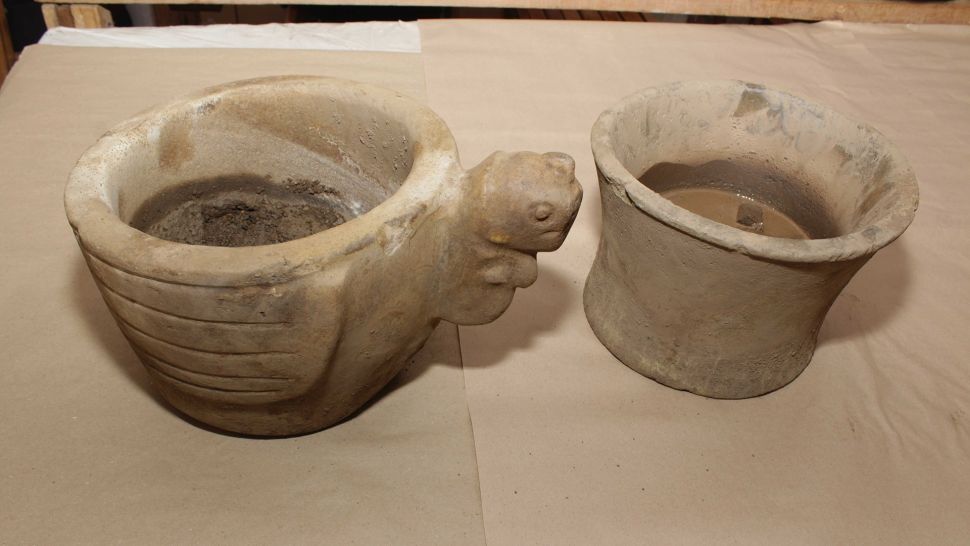
Archaeologists have revealed a complex of hidden passageways and galleries deep inside the ancient Chavín de Huántar temple complex in the Peruvian Andes. The researchers think the network of chambers and galleries was used in religious rituals, possibly involving psychedelic drugs.
It's the first time in about 3,000 years that these particular hidden structures have been explored; some of the dark and isolated chambers may have been used for sensory deprivation, while some of the larger galleries seem to have been used for the worship of idols, said John Rick, a Stanford University archaeologist who is leading the research.
"These are stone-lined passageways, corridors, rooms, cells, and niches, big enough to walk through, roofed with stone beams," he told Live Science in an email. "The galleries have a diversity of function from what we can tell, [but] all are related to ritual activity."
Rick explained that the newly discovered passageways weren't strictly tunnels, because they hadn't been dug into the ground. Instead, they were deliberately constructed inside the mass of the enormous temple complex as it was built in stages between 1200 BCE and 200 BCE.
Some of the chambers seem to have originally been rooms near the surface that were kept accessible for a time with heavy-duty roofs and extended entrance passages, he said. The passageways are up to 300 feet (100 meters) long, but many are twisting, with right-angled corners and multiple levels.
A total of 36 galleries and their associated passageways have now been found at Chavín de Huántar over 15 years of excavations, but this latest network was detected only a few years ago and was not explored until this year, Rick said.
 The temple complex at Chavín de Huántar. (Qpqqy/CC BY-SA 4.0/Wikimedia Commons)
The temple complex at Chavín de Huántar. (Qpqqy/CC BY-SA 4.0/Wikimedia Commons)
Ancient temple
Archaeologists think Chavín de Huántar was a religious center for the mysterious Chavín people, who lived in the northern and central parts of what's now Peru between 3,200 and 2,200 years ago, according to Encyclopedia Britannica.
The complex is about 270 miles (430 kilometers) north of Lima, in a mountain valley at a height of more than 10,000 feet (3,000 m), and it's the largest of several Chavín religious sites found so far.
Rick said the latest passageways deep inside the complex were first detected in 2019 and were initially explored with a remote-controlled camera.
COVID-19 restrictions prevented further exploration until May of this year, when archaeologists were able to enter the passageways for the first time since they were apparently sealed off about 3,000 years ago, he said.
The passageways led to a main gallery that contained two large ritual stone bowls, one of them decorated with the symbolic head and wings of a condor, a large Andean bird of prey. The gallery is now known as the Condor Gallery as a result.
"We have now documented the gallery, but have much left to explore," Rick said. "Major excavations will start next year."
He added that the gallery was deeper than most of those found before, and appeared to be older. "The Condor Gallery shows many lines of evidence pointing at an age of at least 3,000 years since the gallery was built, and probably since it was formally sealed," Rick said.
 Two stone bowls, one with Andean Condor features, found in a gallery. (John Rick/Programa Chavin)
Two stone bowls, one with Andean Condor features, found in a gallery. (John Rick/Programa Chavin)
Mysterious religion
Little is known about Chavín beliefs, but the newly discovered passages and gallery seem to have had a religious purpose, like other chambers found in the past at Chavín de Huántar. "The galleries have a diversity of function, from what we can tell," Rick said.
They include several small chambers that might have been used for sensory deprivation or ritual visual, auditory and tactile disorientation, he said.
Others chambers were used for worship or to store ritual equipment, including the famous carved ornamental trumpets made from giant conch shells that were unearthed at Chavín de Huántar in large numbers and that seem to have been used in ceremonies there, he said.
While some passageways and galleries have been discovered at religious sites of similar age in the Andes, they are usually much smaller and simpler – "nothing like the profusion found in Chavín," Rick said.
"The most similar passages in the New World might be the caves beneath the pyramids of Teotihuacan in central Mexico, but the differences are still glaring," Rick said. "Chavín is effectively unique in the number and nature of galleries."
Anthropologist and archaeologist Richard Burger, an expert in South American prehistory at Yale University who was not involved in the latest research at Chavín de Huántar, said the two bowls in the Condor Gallery were probably mortars used to grind up psychedelic drugs for religious ceremonies.
"There was a tradition in Chavín to inhale hallucinogenic snuff," he told Live Science. He's argued that it was made from seed pods of the vilca tree, which contain a powerful hallucinogenic substance that includes dimethyltryptamine, or DMT.
University of Florida anthropologist Dan Contreras, who wasn't involved in the discovery but has worked with Rick at Chavín de Huántar, said the latest tunnels present a rare opportunity for archaeologists to study the passageways with new techniques.
While the temple complex at Chavín included several sealed networks of passageways, "this is one that has remained entirely unknown," he said. "Until now, not only had it not been entered, but nobody even knew that it was there."
Many of the passageways seem to have originally been near the surface, but they were sealed off as the complex was built higher over the centuries, he said. One of the most famous is a gallery with a stone monolith near its center.
"There is a compelling argument that this was originally an open plaza," Contreras said. "Then, as the temple was built around it, they kept access to what had been a plaza, but it was now an entirely enclosed space."
This article was originally published by Live Science. Read the original article here.





No comments:
Post a Comment